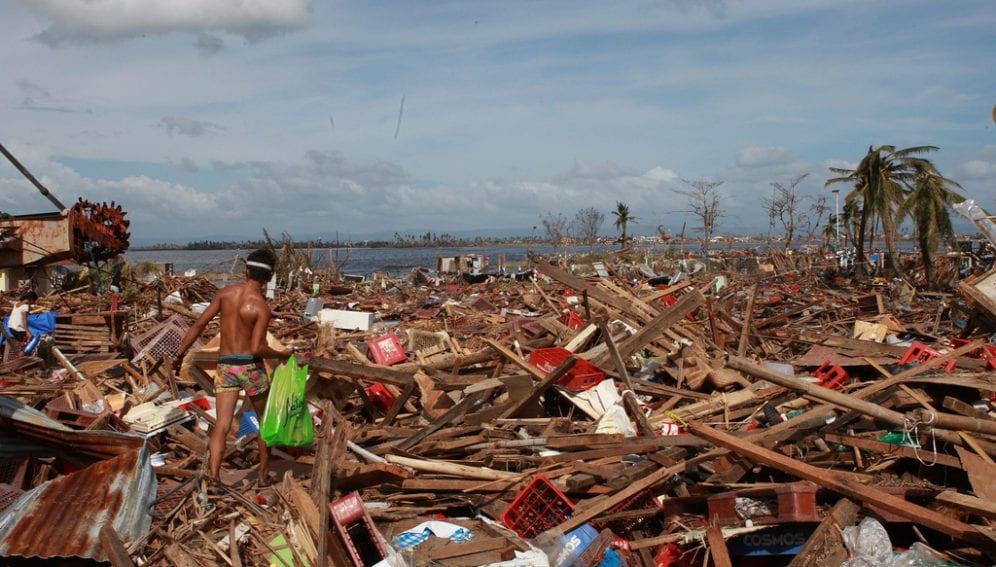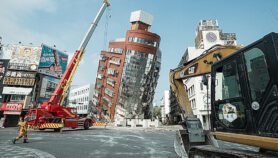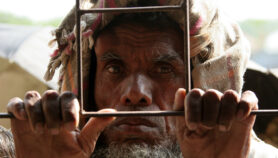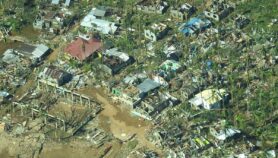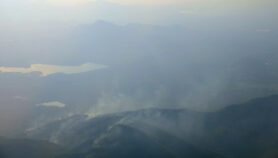By: Anna Valmero
Send to a friend
The details you provide on this page will not be used to send unsolicited email, and will not be sold to a 3rd party. See privacy policy.
MANILA — As the UN secretary-general’s special representative for disaster risk reduction, Margareta Wahlström ensures strategic and operational coherence in disaster risk reduction and management activities. SciDev.Net caught up with her during a break at the Asia-Europe Meeting (ASEM) Manila Conference (5-6 June).
Wahlström, a Swedish national with over 30 years of extensive experience in disaster and humanitarian relief operations, shares her assessment of the Asia-Pacific region’s efforts in integrating resilience into development plans.
How are developing and disaster-prone countries in Asia building resilience as part of their development agendas?
Across Asia, there is mixed performance in disaster risk reduction and management (DRRM). But mainstreaming resilience into development is important for Asia, which saw significant economic boom over the last two decades owing to its young, skilled population.
Asian countries that are leading in economic growth include China, India, South Korea, Thailand and Vietnam. Global assessments also point to the Philippines and Pakistan in terms of economic growth.
Both the UN and World Bank observe that disaster losses are intimately linked with rapid economic growth. Countries in the region that prioritised economic growth, but cut investments on environmental conservation or health improvement, eventually have to catch up to maintain growth.
Strong political leadership that involves risk scenarios in economic policy planning, coupled with consistent implementation, is key to achieving the positive impact of investing in prevention and mitigation.
What role does science play in establishing Asia’s resilience to disasters and climate change?
The scientific community has a huge role in pushing for awareness on DRRM. Some 20 years ago, research shifted from DRRM to climate change when it became a hot topic. Science has to go where the money is for R&D.
This is not entirely bad because we were able to see the link between climate change and DRRM, and how they are often similar — only that DRRM is more encompassing and includes earthquakes and volcanic eruptions.
I am happy about the resurgence of interest on DRRM, given that more countries are experiencing severe weather events. We need to recognise the engineering sciences for developing building codes and standards, early warning systems and communications technology.
What are the research gaps?
These are under-researched areas that need studies on the medium- and long-term economic impacts of disasters on individuals and communities.
An example is how children in disaster-hit areas have lost 12 months of schooling because schools are destroyed or used as shelters. I sometimes visit communities 15 years after the disaster and I ask them: What is the most important thing for you after the disaster? They say it is economic recovery.
Future leaders lack appreciation of risk because it is not taught in school, especially in areas that can offer solutions such as engineering, agronomy, business and health. There is a strong need to mobilise scientists and ask people if they see science as part of the solution.
In addition to the long-term economic impacts of disasters, there is also the need to better understand the health impact of disasters — in terms of contagious diseases, pandemic outbreaks and the social science of ensuring people’s safety.
A strong focus on a country or a community’s disaster history is another way to move forward.
In preparation for the post-2015 update on the Hyogo Framework for Action, there is a strong voice among scientists to focus on applied research.
Moving forward with the post-Hyogo risk reduction policy framework, we are working with scientists to understand the gaps so they can better position the issues and the solutions and thus create the demand for risk research.
What set of standards can be used to ensure the delivery of results in integrating resilience into development while preventing corruption?
Corruption is a risk and while there are multiple transparency measures, these do not necessarily end corruption. The answer to this goes back to building accountability in each individual, understanding why corruption impacts overall development, and developing a culture against corruption. Safeguards that can be put in place include a clear process of auditing and the need to change auditors more often.
The Convention on Anti-Corruption was also adopted by the UN General Assembly on how to protect our common interests via checks and balances.
How can we better use today’s information and technology to create better applications for risk resilience?
Today, we have a wealth of information showing evidence that disaster prevention works and that it is more cost-efficient for societies to mitigate disaster losses this way. Much of this information came from technology-driven applications. An example is the use of satellite images to track damages in disaster-hit areas.
One potential area for future applications includes the monitoring of vulnerable communities at risk to floods and landslides due to the natural topography of the land or human-induced factors such as deforestation that can cause massive debris flow. A case for this was what happened in the Philippines when boulders and mud cascaded from the mountains and buried a community during a strong typhoon.
Technology is there but there needs to be a demand. Key to creating this demand and pushing for more science is the increasing awareness among cross-sector stakeholders of disaster prevention and mitigation as a choice, as opposed to recovery and rehabilitation efforts after a disaster.
One way forward is to get the education system to focus on risk studies and encourage young researchers to integrate risk in development studies.
Another way forward is grooming scientists and researchers to be better communicators.
What will compel communities to adopt risk reduction as part of the culture of preparedness?
The social science behind the implementation of disaster risk reduction is the most mysterious part. It does not matter how you plan; the way people behave with regards to the plan determines the result.
Using technology in communicating warnings is not enough. The warnings should make sense for the receiver to react accordingly, and the agency issuing warnings should have the authority so people will trust the warnings and stop second-guessing the impact. Without this authority, getting the word out is similar to posting a rumour on social networks.
This brings us to how we can use our wealth of information and technology to better understand how humans perceive and react to risk.
Risk perception is not an exact science but it will give an idea how to plan out systems. Instead of just sitting in our offices making perfect plans and expecting their perfect execution, we need to develop plans with the people.
In terms of hard sciences and its practical application, there is strong demand for engineering research on flood barriers and for building codes and standards, so houses and buildings are resilient especially in disaster-prone areas exposed to high winds from typhoons, landslides, ground rupture from earthquakes, and others. Enforcing these standards is another matter altogether that could be addressed in risk perception.
What role do individuals play in this agenda?
Unless citizens and different stakeholders take responsibility, we cannot achieve change. Governments cannot do everything on their own.
For its part, there is a need for government to establish policies that are both directive and inclusive to keep society engaged. This is the final piece needed to complement and address the gaps in government leadership. The strong engagement of the youth to share their voice, time and skills is a welcome development.
One good way to involve the youth more is for every country to include in their national history books their own history of disasters and its impact across sectors.
History is important. If a country or a population is aware of its own disaster history, they would treat them more seriously.
This article has been produced by SciDev.Net's South-East Asia & Pacific desk.


